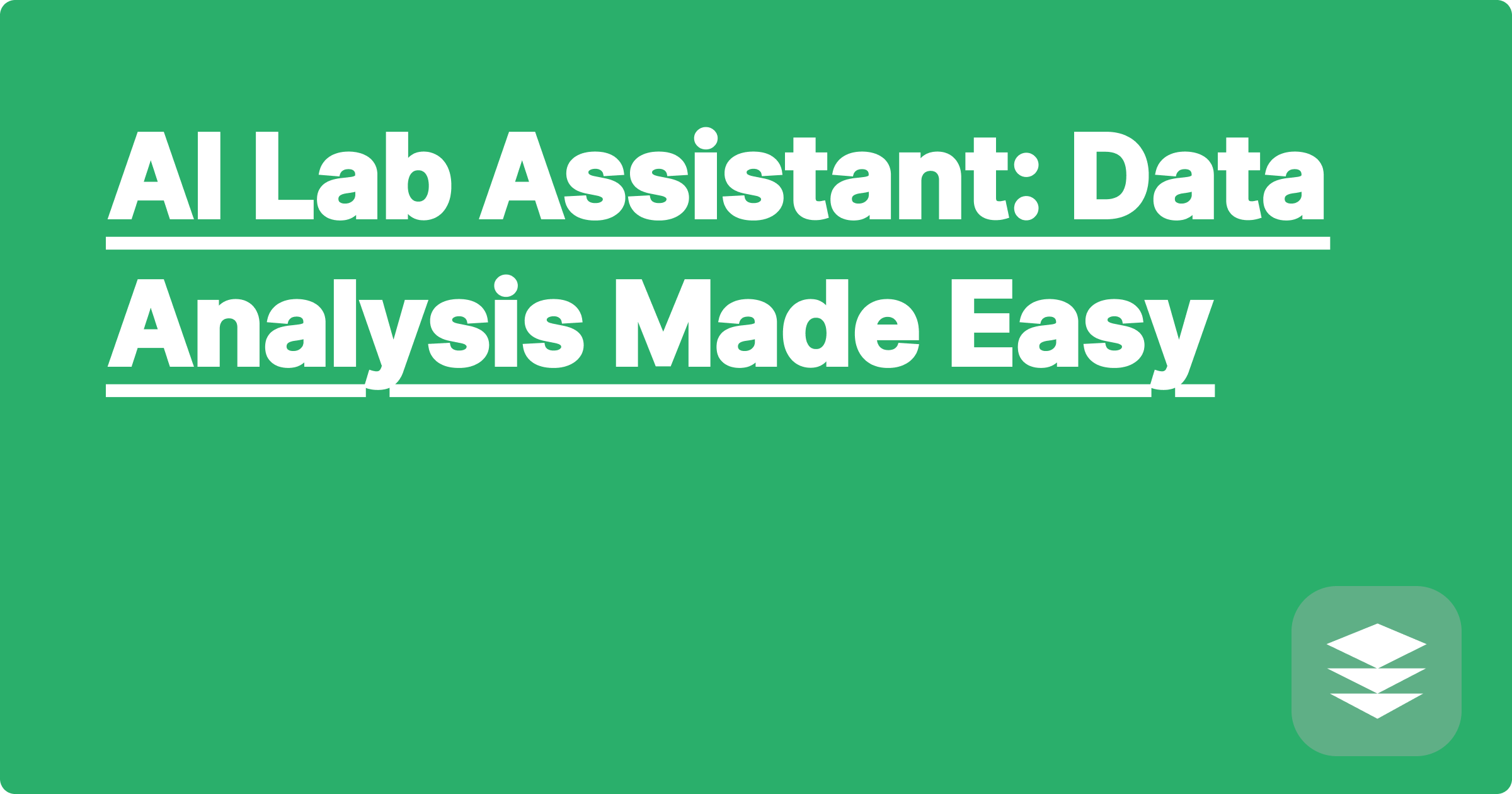
The sheer volume of data generated in modern STEM research can feel overwhelming. From complex simulations to high-throughput experiments, researchers are constantly grappling with massive datasets, often spending countless hours on tedious data cleaning, processing, and analysis. This can significantly hinder research progress, delaying discoveries and impacting overall productivity. Imagine a world where these time-consuming tasks could be streamlined, freeing up researchers to focus on what truly matters: interpreting results, formulating hypotheses, and driving scientific innovation. This is where the power of AI comes into play, offering a transformative approach to data analysis and ushering in a new era of efficiency in STEM research.
For STEM students and researchers, efficient data analysis isn't just a desirable skill; it's a necessity. The ability to quickly and accurately analyze data is crucial for drawing meaningful conclusions, publishing impactful research, and ultimately advancing scientific knowledge. Traditional data analysis methods can be slow, complex, and prone to errors, especially when dealing with large and complex datasets. By embracing AI-powered tools, researchers can significantly reduce the time spent on these tasks, freeing up valuable time for higher-level thinking, collaboration, and exploration of new research avenues. This blog post will delve into the practical applications of AI in STEM research, focusing specifically on data analysis and visualization, and providing actionable strategies for maximizing your research productivity.
The challenges of data analysis in STEM research are multifaceted. Data often comes in various formats, requiring extensive cleaning and pre-processing before any meaningful analysis can begin. This can involve handling missing values, dealing with inconsistencies, and transforming data into a usable format. Once the data is prepared, choosing the appropriate statistical methods and implementing them correctly can be another hurdle, especially for researchers who may not have extensive statistical expertise. Finally, visualizing the results in a clear and compelling way is essential for communicating findings effectively, but creating insightful visualizations can be time-consuming and require specialized software skills. These combined challenges can create a significant bottleneck in the research process, limiting the speed and efficiency of scientific discovery.
AI tools offer a powerful solution to these challenges, automating many of the tedious and time-consuming aspects of data analysis. Tools like ChatGPT, Claude, and Wolfram Alpha can assist with data cleaning and pre-processing, offering suggestions for handling missing values and identifying potential inconsistencies. They can also help researchers choose appropriate statistical methods, even generating code snippets for implementation in popular programming languages like Python or R. Furthermore, AI-powered visualization tools can automatically generate insightful charts and graphs, simplifying the process of communicating complex data in a visually appealing and easily understandable manner. These tools act like a virtual AI lab assistant, guiding researchers through the data analysis process and empowering them to extract meaningful insights from their data more efficiently.
Let's consider a scenario where a researcher is analyzing data from a biological experiment. First, the researcher can upload their raw data into a platform like Google Colab, a cloud-based Jupyter notebook environment. Next, they can use ChatGPT or Claude to generate Python code for cleaning and pre-processing the data, addressing issues like missing values and outliers. For instance, prompting ChatGPT with "Write Python code to impute missing values in a Pandas DataFrame using the mean imputation method" will generate the necessary code. Then, the researcher can utilize Wolfram Alpha to perform statistical analysis, querying the platform with questions like "Calculate the correlation coefficient between gene expression and temperature." Finally, AI-powered visualization libraries like Plotly or Seaborn can be used to create interactive and visually appealing graphs of the results, simplifying the process of data interpretation and presentation.
In materials science, AI can predict the properties of new materials based on their chemical composition, accelerating the discovery of novel materials with desired characteristics. Imagine using an AI tool to analyze the spectral data from a new alloy and predict its tensile strength, saving months of experimental testing. In astrophysics, AI algorithms can analyze vast amounts of telescope data to identify patterns and anomalies, potentially leading to the discovery of new celestial objects or phenomena. Think of using an AI to sift through terabytes of astronomical images, identifying potential supernovae candidates that might otherwise be missed by human observers. In drug discovery, AI can analyze molecular structures and predict their biological activity, significantly speeding up the process of identifying promising drug candidates. Envision using an AI to analyze the binding affinity of thousands of potential drug molecules to a target protein, narrowing down the search for effective therapies.
Integrating AI tools into your research workflow requires a strategic approach. Start by identifying the specific areas where AI can provide the most benefit. Are you struggling with data cleaning? Do you need help with statistical analysis? Or are you looking for ways to improve your data visualization skills? Once you've identified your needs, explore the various AI tools available and choose the ones that best fit your specific research requirements. Don't be afraid to experiment with different tools and approaches to find what works best for you. Remember, AI is a tool, and its effectiveness depends on how you use it. By strategically integrating AI into your research process, you can unlock its full potential and significantly enhance your academic productivity.
Embracing AI in STEM research is not just about adopting new tools; it's about transforming the way we approach scientific discovery. By automating tedious tasks, AI frees up researchers to focus on the creative and intellectual aspects of their work, accelerating the pace of innovation and pushing the boundaries of human knowledge. Start exploring the possibilities today, and witness the transformative power of AI in your own research.
AI Math Solver: Get Unstuck Now!
AI Research Notes: Organize Smart
AI for CAD: Design Smarter, Faster
AI Physics Solver: Get Unstuck Now!
AI Lab Assistant: Data Analysis Made Easy
AI Math Tutor: Conquer Complex Problems
AI for Simulations: Optimize Experiments
AI Chemistry Solver: Ace Your Homework